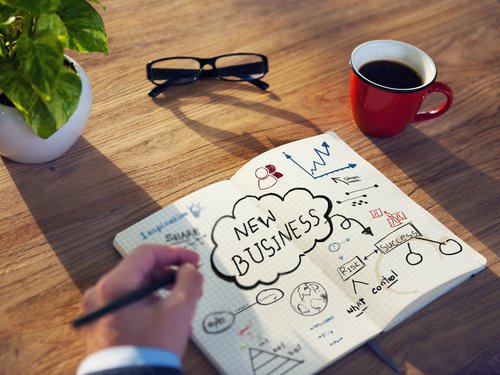The Five Phases of SME Growth
While different in many ways, most small and medium sized enterprises have common experiences as they move from the point of inception to sustainability. Here's what you can expect from the growth cycle of your SME.
Phase I: Existence: During this stage, entrepreneurs conceptualize ideas and test the market to determine which services or products they should deploy to become successful. This will include identifying a target audience, gaining an understanding of market dynamics and committing to the prospect of business longevity. This is also the startup phase for companies, during which business owners typically handle all or most of the operational duties.
If they can establish a demand for a product or service, businesses can move on to the next phase. In many cases, however, companies are forced to sell or close during the existence phase, because they either fail to acquire investor money or simply run out of capital.
Phase II: Survival: If it is fortunate enough to reach the survival stage, a business will have established a clear market for its product or service. At this point, it must determine a way to generate enough cash to remain in business, make payments on debts and finance enough growth to compete in the existing market.
During the survival stage, the complexity of a company's operations will be similar to what it was during the existence phase: The owner will still do a lot of work; there will be few, if any, in-house employees; and the company may not have a brick-and-mortar presence. Unfortunately, this can be an especially difficult time for business owners, who will face a growing number of tedious operational tasks that keep them from focusing on growing their businesses. In turn, many choose to offload these duties to a highly trained virtual assistant.
Phase III: Success: This phase includes a pair of sub-stages: Success-Disengagement and Success-Growth. By reaching the Success-Disengagement sub-phase, a business has established a profitable model. Now, it will need to decide whether to maintain its course or scale up. If the company has good product-market penetration, good size and decent profits, it may choose to stay as is. To maintain a profitable status quo, the company will usually need to hire managers to ensure smooth sailing.
If, on the other hand, the business owner has ambitions for growth, he or she may choose to enter the Success-Growth sub-phase. To do so, the business will need to cultivate its talent pool, so the owner can take on heavily strategic parts of the company that would drive growth.
Phase IV: Take Off: When business owners enter the Success-Growth sub-phase, they need to closely assess viability, so they can scale back before overextending themselves. This will involve honestly determining if the owner is capable of delegating responsibility to improve the overall effectiveness of what is becoming a complex business. The owner must also determine if there will be cash available to finance new demands, timely opportunities and unexpected setbacks.
If the business owner can successfully accomplish all of this, the company can really “take off.” When successful, the Take Off phase will usually result in a more segmented enterprise, which will include divisions and departments that handle sales, production and staffing.
Phase V: Sustainability: Also known as the Resource Maturity phase, sustainability means a company has arrived. As a sustainable enterprise, the business will have become decentralized with well-developed systems and more than enough financial resources. It will also have plenty of executive talent that allows the owner to take a more hands-off approach.
With all that said, sustainability comes with its own set of challenges: Because the company is very large, it may struggle with inefficiencies. It may also have difficulty maintaining the same flexibility and agility that gave it an advantage when it was a smaller enterprise.
During this phase, the company must find a way to consolidate and control the financial gains that come with rapid growth. It must also expand and refine its talent pool to eliminate costly operational inefficiencies. If the company can leverage its financial resources, size and managerial talent - while preserving its entrepreneurial spirit - it will have a virtually endless ceiling. If not, it could become stagnant, which could cause it to become vulnerable to industry advancements and unexpected changes in the market.
Intelligent Office has diverse business solutions that can help your company grow. Contact our office to learn more.





